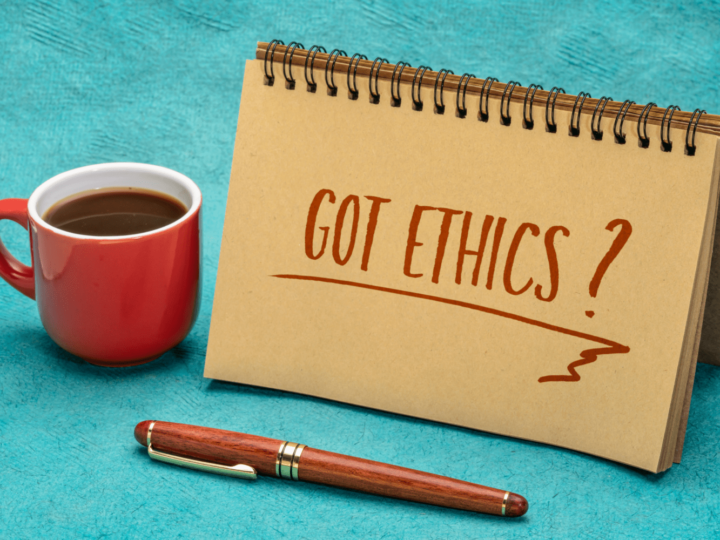
In the high-stakes world of leading others, the “Dr. Jekyll and Mr(s). Hyde” syndrome isn’t just a classic literary reference—it’s a real-world challenge. Picture this: One moment, you’re the embodiment of calm, doling out praises and encouragement like candy on Halloween. The next, you’re the storm cloud darkening the office, thundering deadlines and critiques. So, how do we ensure our leadership style remains more Dr. Jekyll and less Mr(s). Hyde, without the need for Victorian-era potion mixing? Here are a few tips to tame your “Hyde”.
Spot Your Triggers and Stress Behaviors
Every leader has their triggers—those moments that test our resolve not to transform into the office ogre. It could be the sight of the third unwarranted “reply-all” email of the day or the project update meeting that goes off the rails. Identifying these triggers is like recognizing we are allergic to bad PowerPoints. It’s the first step to changing our mindset about challenges around us.
The Mirror of Self-Awareness
Self-awareness is the looking glass every leader needs to peer into. It helps us see beyond the monster in the mirror to the calm, capable leader we know we can be. This might mean realizing that our “motivational speeches” sound more like Captain Bligh than Captain America, and adjusting accordingly. If you are up for the challenge, consider a great assessment like Birkman to show where your needs, stress behaviors and usual strengths reside. Knowledge is power when it comes to understanding our behaviors.
Stress-Busters: Beyond the Coffee Break
Negative stress can be the mad scientist turning us from Jekyll to Hyde. Effective leaders find their unique antidote—be it a quick walk, a session of desk yoga, or a solemn oath to finally use that meditation app we downloaded ages ago. Research has shown we can actually change our brain neurology (amygdala) through meditation. A large number of high-level leaders also use breathing techniques between meetings to reset their “Dr. Jekyll”. The key is to identify when we are in a “stress behavior” and have a set of tools at the ready to help us shift before we start engaging with our team. Even more importantly, recognize that the cause of the stress is often internal, located inside our own fears and worries.
Feedback: The Breakfast of Champions
Feedback is the cereal of the leadership diet—essential for growth and sometimes tough to swallow. Encourage a culture where feedback flows both ways. It’s about learning that sometimes, our “constructive criticism” comes off more like Godzilla’s roar than gentle guidance. The higher we are on the proverbial work food chain, the larger our voice sounds, regardless of how softly we whisper. It’s our manager megaphone. For feedback, consider leading by example and doing a Leadership 360 to understand where we can build those capabilities and leadership muscles. Giving people permission to provide feedback makes them more open to receiving it as well.
Emotional Intelligence: Your Leadership Superpower
Emotional Intelligence is what keeps us from sending that fire-and-brimstone email after a long day. It’s recognizing when our team needs a leader who listens, not one who lectures. Enhancing our EI means understanding the difference between an email that reads like a warm hug and one that feels like a cold shoulder. The good news is that Emotional Intelligence can be learned! It’s like singing. Even if some people have more natural ability, everyone can do it! Some of us just need to work a little harder to develop the skill.
SMART Goals: Not Just for Overachievers
Setting SMART goals is your roadmap from chaos to clarity. It’s about making sure your leadership goals are well-defined. Specific, Measurable, Achievable, Relevant, and Time-bound goals keep your leadership style on the straight and narrow by focusing on what matters, even when the office Wi-Fi is on the fritz. Clarity is kindness, for you and the team!
Consult the Council of Elders
Sometimes, the path from “Mr(s). Hyde” back to “Dr. Jekyll” is too foggy to navigate alone. This is when it’s wise to consult the council of elders—or as they’re more commonly known, therapists or executive coaches. They’re like Gandalf for your leadership journey, offering wisdom and perspective without the need for a staff and a pointy hat.
Practice Makes Perfect…ish
Remember, perfect leadership is like a unicorn—much talked about but rarely seen. It’s about striving for improvement, not perfection. Embrace your missteps as learning opportunities, and know that sometimes, a little humor can diffuse even the most monstrous of moods.
Leading with consistency requires acknowledging our inner Dr. Jekyll and Mr(s). Hyde, understanding what triggers our transformations, and actively working towards a balanced leadership style. By cultivating self-awareness, managing stress, embracing feedback, enhancing emotional intelligence, setting clear goals, seeking guidance, and practicing patience, we can lead our teams with grace, even under pressure. And remember, a little appropriate humor and vulnerability go a long way in keeping the monsters at bay.
Need support in identifying those triggers and taming your “Hyde”? Reach out!




